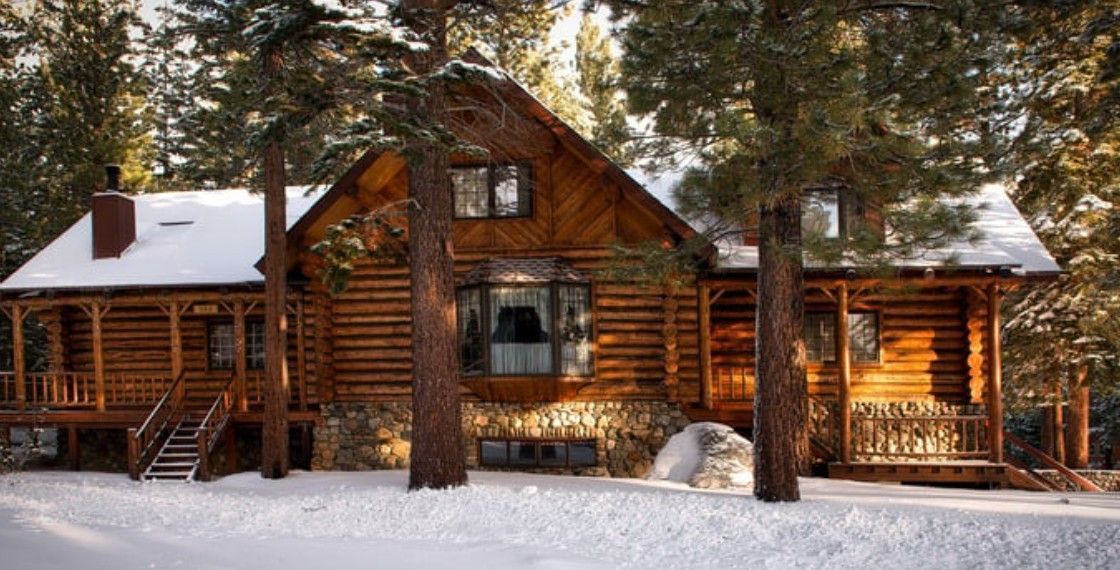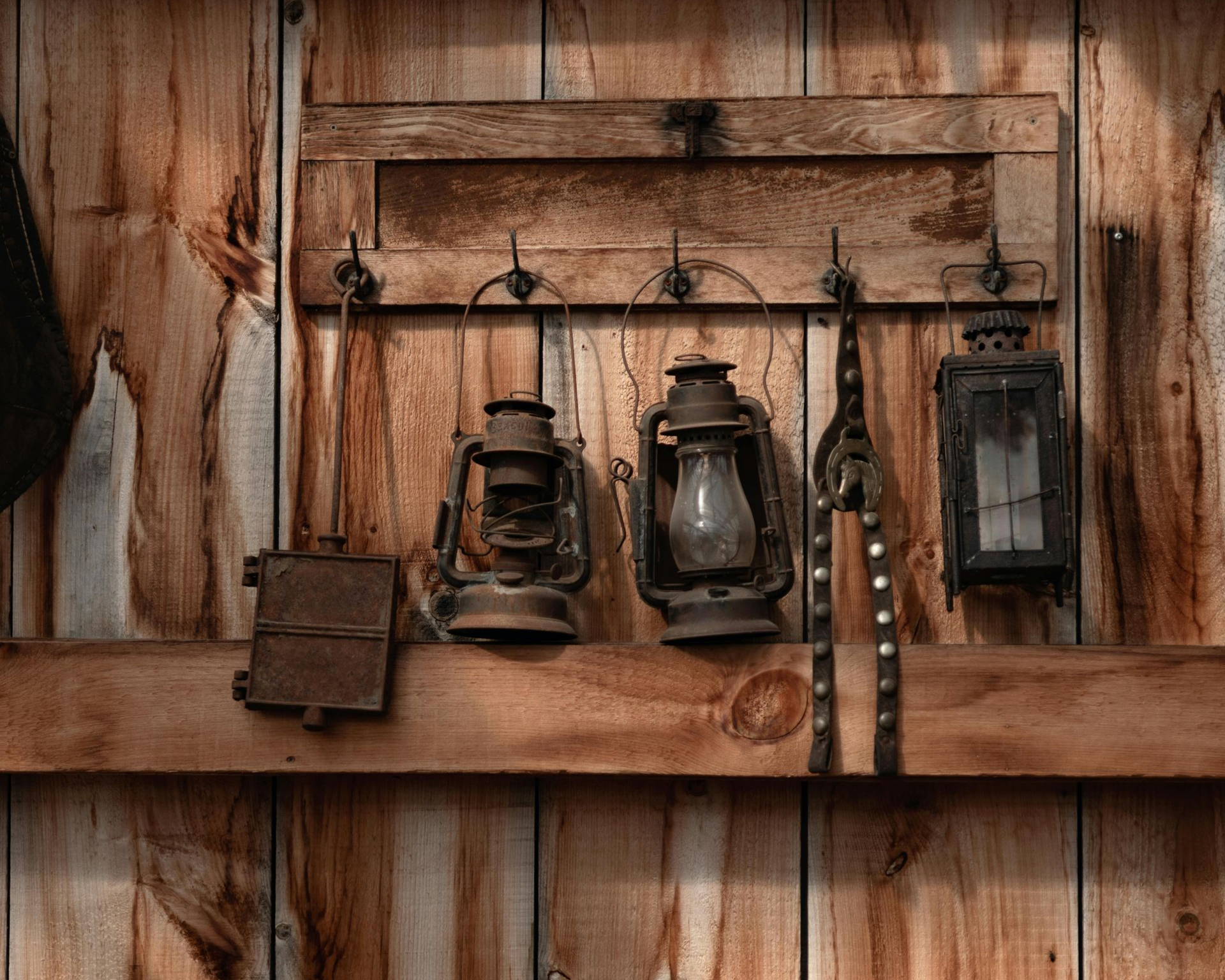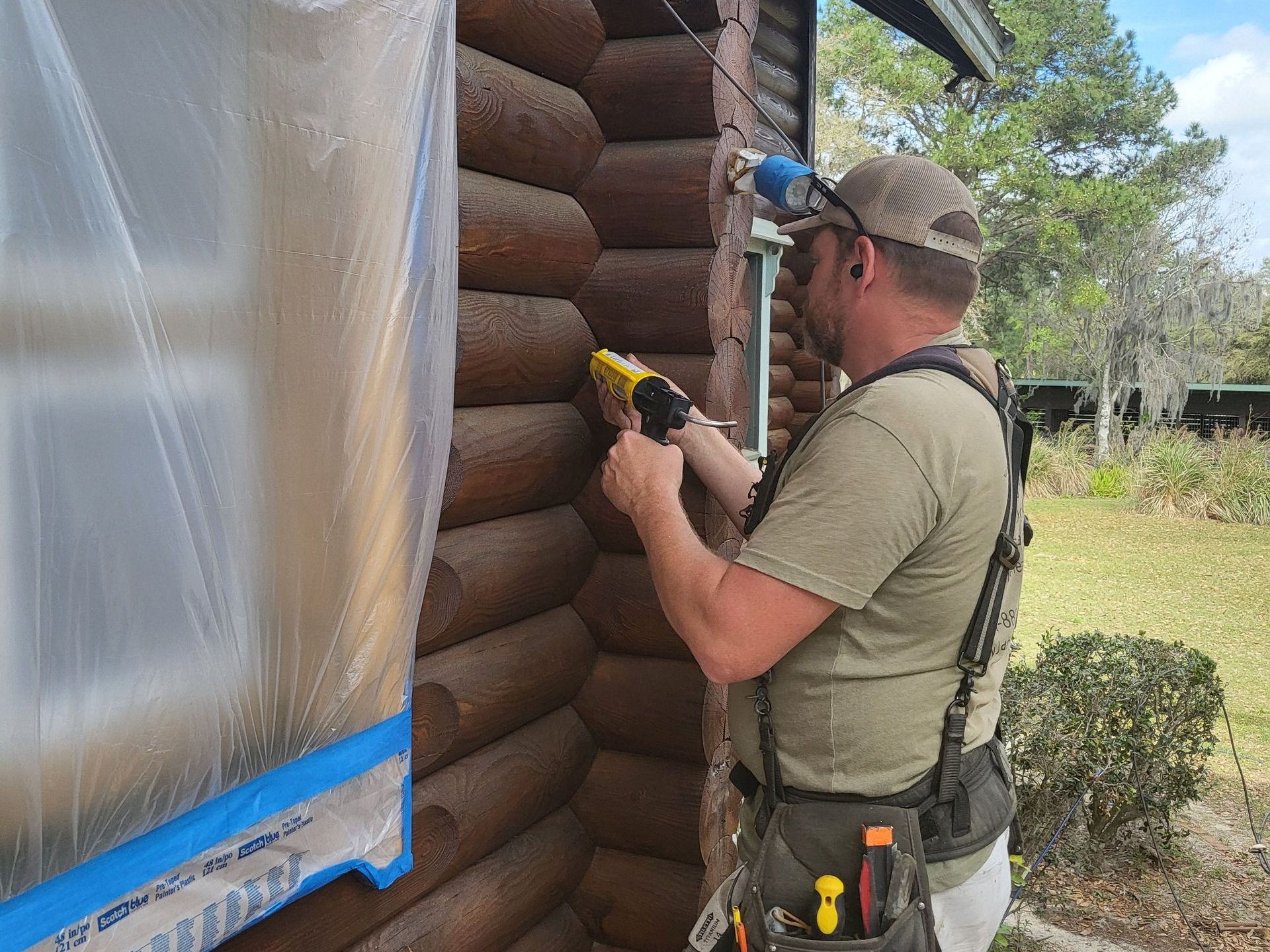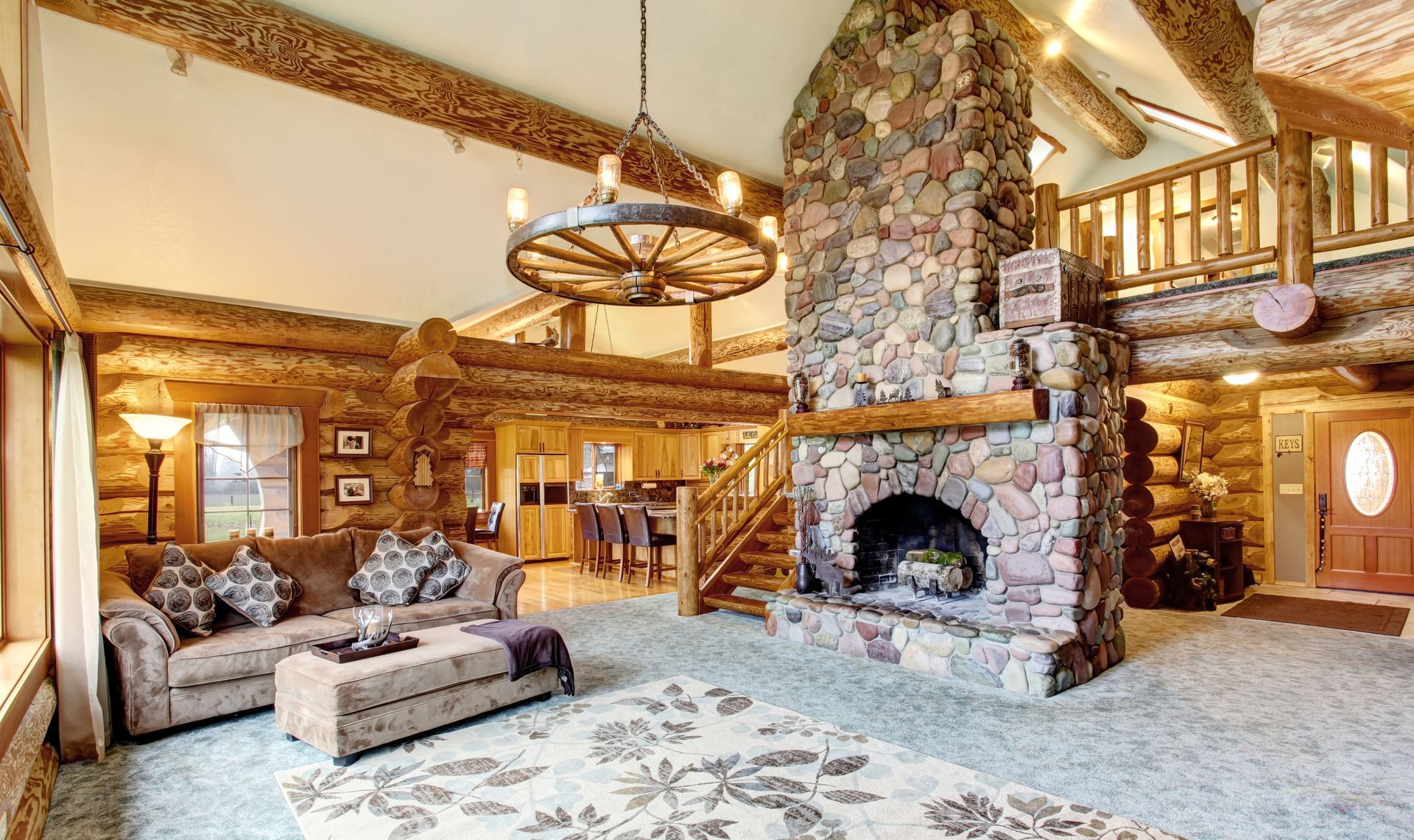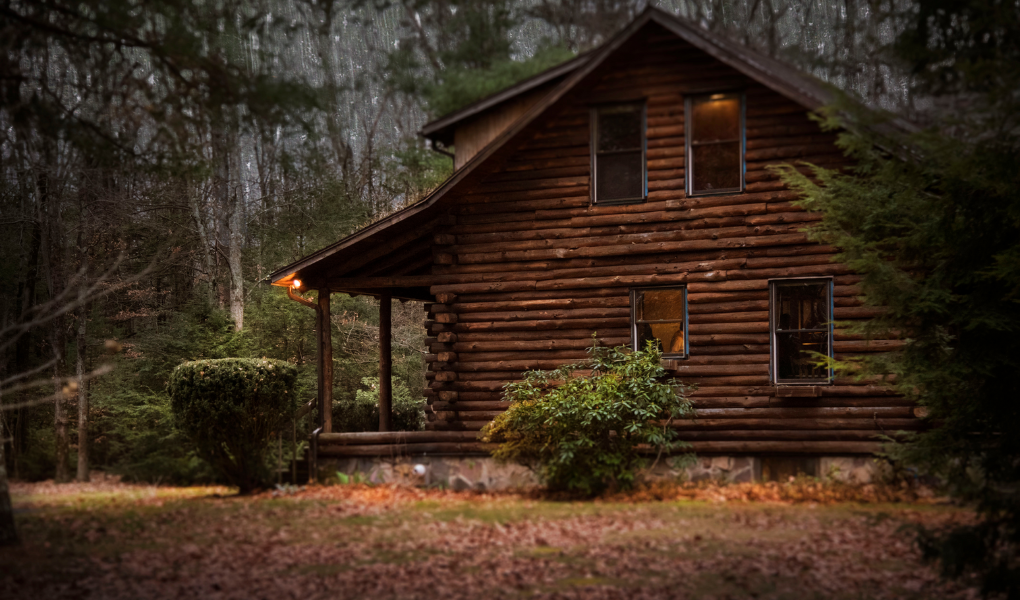Insect Invaders: How to Keep Carpenter Bees and Termites at Bay
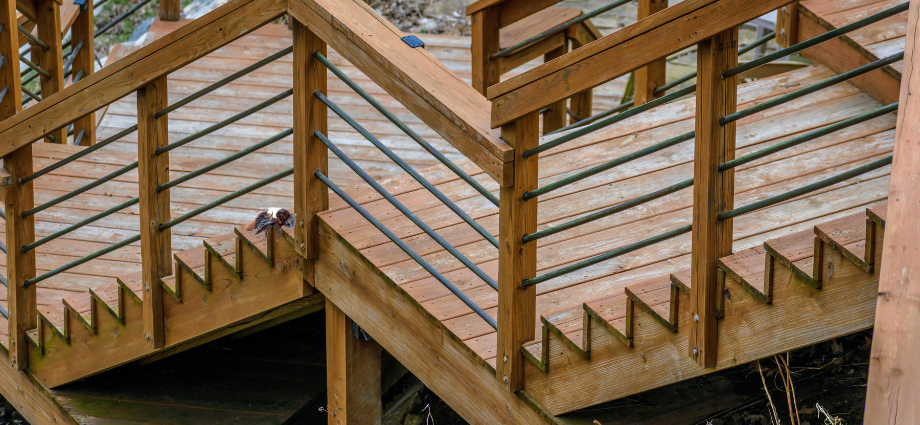
Your log cabin is your fortress, a cozy haven standing tall amidst nature’s beauty. But even the strongest castles can face siege, and in this case, the invaders are carpenter bees and termites. These tiny troublemakers may seem insignificant, but their penchant for tunneling, munching, and nesting can spell big trouble for your beloved log home.
Protecting your log cabin from these pesky insects doesn’t have to be a daunting task. By arming yourself with knowledge, preventative strategies, and the right help, you can safeguard your home’s durability and charm for years to come.
Know Your Enemy
Before you can mount your defense, it’s essential to understand your adversaries. Carpenter bees and termites may attack for different reasons, but the result of their handiwork is the same: compromised wood and costly damage.
Carpenter Bees
- Traits: Carpenter bees are solitary insects that resemble bumblebees but without the fuzzy rear. They’re not social but extremely industrious.
- Behavior: These bees drill nearly perfect round holes into wood to create nests. You’ll often find their handiwork along eaves, porches, and untreated wood surfaces.
- Signs to Watch For:
- Small, round holes about half an inch in diameter.
- Sawdust (called "frass") near the entry points.
- A surprising number of bees buzzing around wooden surfaces.
Termites
- Traits: Termites are social insects with a voracious appetite for wood cellulose. They work silently, often causing significant damage before being noticed.
- Behavior: Termites build tunnels and feast from the inside out, making their presence hard to detect at first.
- Signs to Watch For:
- Mud tubes along your home’s foundation or walls.
- Hollow-sounding wood when tapped.
- Discarded wings left by swarming termites.
Now that you know your opponents, it’s time to fortify your defenses.
DIY Prevention Tips
When it comes to defending your log cabin, proactive measures are your best bet. Thankfully, there are several straightforward steps you can take to keep these insect invaders at bay.
1. Keep Your Wood Treated and Sealed
Bees and termites are drawn to untreated or decayed wood. A robust sealant can act as a shield, protecting your logs from insect damage.
- Reseal your logs every 3-5 years with quality products designed for log cabins.
- Opt for stains or sealants with natural insect-repellent properties for added protection.
2. Eliminate Moisture Sources
Termites love moist environments, so your goal is a dry, well-ventilated cabin.
- Fix leaks in your roof, plumbing, or gutters promptly.
- Slope the ground around your home to direct water away from the foundation.
- Use dehumidifiers or fans in damp areas indoors.
3. Block Entry Points
Carpenter bees and termites need access to your wood. Deny them a foothold by sealing gaps and holes.
- Fill cracks and crevices in wood with caulk or wood filler.
- Install fine-mesh screens over vents and cover any exposed wood surfaces with metal flashing or replace with concrete trim materials.
4. Trim Back Vegetation
Termites often use nearby plants to access your home, and carpenter bees thrive near shaded, overgrown areas.
- Keep bushes, trees, and shrubs at least two feet away from your cabin walls.
- Remove any dead or rotting wood from your property.
5. Introduce Natural Predators
Nature can lend a helping hand (or fang). Encourage predators like birds and bats, which feed on carpenter bees and termites.
- Install birdhouses or bat boxes nearby to attract these beneficial animals.
Eco-Friendly Solutions for Pest Prevention
If you prefer to keep things earth-friendly, there are several natural options to deter carpenter bees and termites.
Carpenter Bees
- Citrus Spray: Mix citrus peel oil with water and spray it into the holes to deter bees.
- Wood Stains with Additives: Look for eco-friendly stain additives that incorporate cedar oil or tea tree oil, that can be added to the topcoat of stain to help deter them. Some of these products can be mixed with water and applied topically with a backpack sprayer, such as NBS30.
Termites
- Nematodes: These microscopic roundworms are a natural predator of termites. Introduce nematodes to your soil and watch them work their magic.
- Orange Oil: Apply this termite-toxic solution directly to infested areas with a cotton swab or sprayer.
Remember, while these solutions can be effective, severe infestations are best handled by professionals.
When to Call in the Experts
DIY methods are great for prevention, but what if you’re already dealing with a full-blown invasion? That’s where the pros come in. Signs you need expert help include:
- Extensive termite or carpenter bee damage.
- Persistent reinfestation despite your efforts.
- Visible structural damage, such as sagging wood or loose beams.
Why Choose Log & Timber Solutions?
At Log & Timber Solutions, we’re more than just pest fighters—we’re log cabin caretakers. Our team combines years of expertise with advanced tools and techniques to keep your cabin beautiful, durable, and pest-free. From inspections to sealing, we focus on methods that respect the natural integrity of your logs.
You Need an Ally for Defending Your Log Home
Defending your log cabin doesn’t have to feel like a losing battle. With some preventative measures, a little eco-friendly ingenuity, and a team of professionals in your corner, you can protect your home from carpenter bees, termites, and whatever else nature throws your way.
Your cabin needs an ally! Reach out to Log & Timber Solutions today and help your log home stand strong against insect invaders. From pest inspections to full log cabin restoration services, we’ve got your back—even when the bees try to sneak in.
Frequently Asked Questions
What is the best way to prevent carpenter bees from damaging my logs?
The best way to keep carpenter bees at bay is to make sure your logs are properly sealed and treated with a high-quality stain or sealant. Opt for options with natural insect-repellent additives like cedar or tea tree oil for added defense. Check and reseal your cabin every 3-5 years to maintain protection, and for extra precaution, fill any existing holes with drione and then a wood filler or caulk to deter nesting.
Are termites more active in certain seasons or weather conditions?
Yes, termites are typically most active during warm and humid weather, especially in spring and summer when swarming occurs. These conditions create the perfect environment for reproduction and colony expansion. Keep your cabin's foundation dry and well-ventilated year-round to make it less attractive to termites, regardless of the season.


